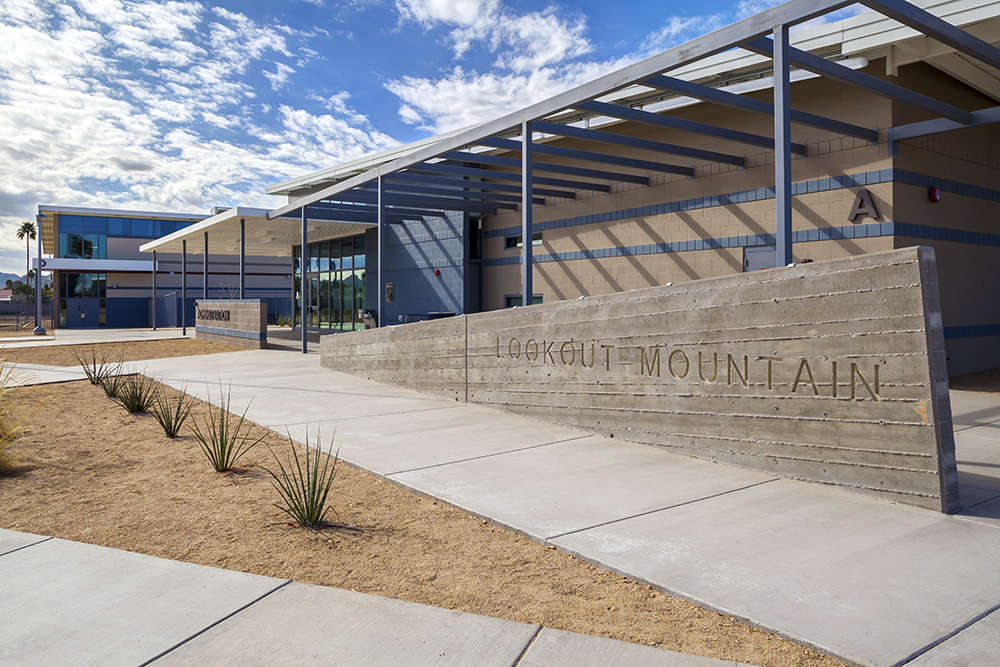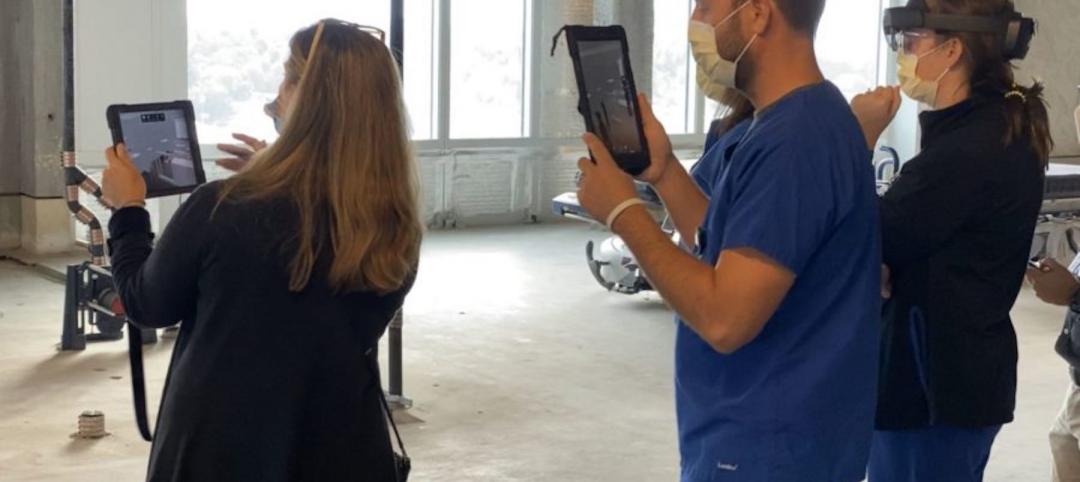“UAV.” “LATISTA.” “CMST.” If BD+C Giants 300 contractors have anything to say about it, these new terms may someday be as well known as “BIM” or “LEED.” Here’s a sampling of what Giant GCs and CMs are doing by way of technological and managerial innovation.
Hoar Construction is using UAVs—$1,200 unmanned aerial vehicles—to replace aerial photography and video on job sites. C.W. Driver is using its new Quad-copter drone to record building conditions and capture live video for inspection purposes. The firm is also using Structure Scanner to take millions of measurements of field conditions and compile the data into point-cloud files for modeling purposes.
In the BIM/VDC arena, Bernards claims that its use of BIM and Lean construction principles has led to a “dramatic reduction” in RFIs and change orders. HITT Contracting says it can now provide virtual O+M services via BIM to help clients improve ongoing building maintenance. Adolfson & Peterson Construction employs BIM on a fourth of its projects, largely for above-ceiling coordination of MEP/FP systems, but expects to deploy BIM more frequently in the future as projects grow in size and complexity.
TOP CONTRACTORS
2013 Contractor Revenue ($)
1 Turner Construction $9,979,430,000
2 Whiting-Turner Contracting Co., The 4,945,423,597
3 Skanska USA 4,866,277,915
4 PCL Construction 4,120,167,281
5 Gilbane 4,018,478,800
6 Balfour Beatty US 3,809,444,142
7 Clark Group 3,602,639,993
8 Fluor Corporation 3,396,120,000
9 Structure Tone 3,152,076,000
10 Lend Lease 2,707,076,000
SEE FULL LIST
TOP CONSTRUCTION MANAGEMENT FIRMS
2013 CM+PM Revenue ($)
1 Jacobs $1,663,220,000
2 Barton Malow 473,626,515
3 Hill International 383,000,000
4 URS Corp. 267,251,113
5 Harkins Builders 189,000,000
6 JE Dunn Construction 175,307,980
7 STV 168,215,000
8 Parsons Brinckerhoff 159,724,478
9 Turner Construction 140,640,000
10 JLL 125,969,026
SEE FULL LIST
Off-the-shelf apps are proving popular with GCs. Paric Corp. and PCL Construction have found Autodesk’s BIM 360 Field useful in providing project content in the field via iPads, laptops, and smartphones. (PCL also uses BIM 360 Glue.) PlanGrid, which S. M. Wilson implemented this year, gives team members—including designers, owners, and subcontractors—instanteous access to construction documents, specifications, punch lists, photos, notes, and RFIs.
Giants 300 coverage of Construction Firms brought to you by Armstrong www.armstrong.com/fastshipclips
Messer Construction has been using LATISTA management software on 80% of its projects in the past year to perform field-based quality control in support of its Lean Daily Management program. LPCiminelli has set up its own customer enterprise system, BRICKS, to drive down costs.
Prefabrication is also grabbing contractors’ attention. Walbridge built 125 complete bathroom units off site for a renovation at the University of Michigan and is building another 750 bath units for a new residence hall at Michigan.
DPR Construction has partnered with OES Supply Company on the development of a “temporary dust containment system” that replaces temporary gypsum board walls. Ten linear feet of the containment barrier can be installed in 10 minutes. Over a three-month period, using 20 linear feet of the anti-dust barrier could save 50% over drywall, says DPR.
Technical innovation is evident at Columbia University’s massive $6.8 billion Manhattanville expansion in West Harlem, where Lend Lease constructed a gigantic slurry wall around the 17-acre plot—“a huge geotechnical accomplishment,” according to Lend Lease. For the Jerome L. Greene Science Center, the contractor is using “top-down” construction, in which work proceeds in both vertical directions simultaneously—a first for the Big Apple, says Lend Lease.
CONTRACTOR INVENTIVENESS NOT LIMITED TO TECH
Contractors are also making headway with management innovations. Summit Contracting now limits its project managers to a single job at a time so that they can devote their undivided attention to that one owner’s project.
Materials delivered to Hoffman Construction sites are used within three workdays; excess items are immediately stored in wheeled, covered receptacles to keep work sites safe.
KBE Building Corp. has implemented a disaster recovery system. All data stored in the firm’s main server in Farmington, Conn., is automatically copied to a backup server in Columbia, Md., reducing recovery time in the event of a disaster to two hours, rather than three days.
Firms are widening their horizons, too. DLR Group has created a Building Optimization Group to provide commissioning, retro Cx, energy modeling, and building analysis services. Shawmut Design and Construction reached out to recent college graduates with its Construction Management Skills Training (CMST) program, a three-year rotation through the firm’s project management, estimating, and field divisions—and got 2,000 applications for 30 positions.
Market perspective: Hill International’s David Richter
“We’re still climbing out of the recession, although the industry’s certainly in a growth mode,” says David L. Richter, President/COO of Hill International, Marlton, N.J. Richter’s father, Irvin, founded the company in 1976 to provide claims consulting, which still constitutes 25% of revenues. Hill, which went public in 2006 (NYSE: HIL), has grown into one of the biggest project management firms in the world, with 4,200 employees in more than 100 offices managing more than 1,000 projects.
Eighty percent of its business is outside the U.S.—half of that in fast-paced non-buildings sectors like transportation and energy—putting the construction management firm on a steeply upward path, says Richter, a BD+C “40 Under 40” superstar (Class of 2006). He will step up to the CEO role in January; his father will stay on as Chairman.
In recent years, the Richters have moved the business in the direction of program management—clients who have multiple massive projects going on at any one time. “Developers in places like the Middle East rarely put up one building,” says Richter. “It’s four, five, six or more at a time, and you can really drive down costs when you have that kind of scale.”
The company is currently managing 40 programs in the billion-dollar range. Current projects include new airport terminals in Abu Dhabi ($2.93 billion), Bahrain ($950 million), and Muscat, Oman ($5.2 billion).
In the U.S., most of Hill’s vertical portfolio is on the East Coast, primarily in higher education and healthcare. Last December, the firm acquired 20-person Collaborative Partners, a Boston firm with strong ties to the New England K-12, healthcare, and biosciences sectors. “That deal has already started to pay off for us, with work at UMass Boston and Northeastern University’s Interdisciplinary Science and Engineering Complex,” says Richter.
Read BD+C's full 2014 Giants 300 Report
Related Stories
Building Team | Jun 27, 2022
Chapel of St. Ignatius by Steven Holl Architects receives AIA’s twenty-five year award
The American Institute of Architects (AIA) is honoring the Chapel of St. Ignatius in Seattle, designed by Steven Holl Architects, with its Twenty-five Year Award.
Green | Jun 22, 2022
The business case for passive house multifamily
A trio of Passive House experts talk about the true costs and benefits of passive house design and construction for multifamily projects.
Building Team | Jun 22, 2022
Design for new San Clemente Marine Safety Headquarters would create new public plaza
A proposed design by HMC Architects for a new San Clemente Marine Safety Headquarters makes creative use of the seaside topography of the Pacific Coast.
Augmented Reality | Jun 22, 2022
Not just for POKÉMON GO anymore: how augmented reality is transforming architecture
By solving a long-standing communication problem, Augmented Reality (AR) is poised to make architecture quicker, nimbler, and more cost effective.
Healthcare Facilities | Jun 22, 2022
Arizona State University’s Health Futures Center: A new home for medical tech innovation
In Phoenix, the Arizona State University (ASU) has constructed its Health Futures Center—expanding the school’s impact as a research institution emphasizing medical technology acceleration and innovation, entrepreneurship, and healthcare education.
Market Data | Jun 22, 2022
Architecture Billings Index slows but remains strong
Architecture firms reported increasing demand for design services in May, according to a new report today from The American Institute of Architects (AIA).
Green | Jun 22, 2022
World’s largest commercial Living Building opens in Portland, Ore.
The world’s largest commercial Living Building recently opened in Portland, Ore.
Multifamily Housing | Jun 21, 2022
Two birds, one solution: Can we solve urban last-mile distribution and housing challenges at the same time?
When it comes to the development of both multifamily housing and last-mile distribution centers, particularly in metropolitan environments, each presents its own series of challenges and hurdles. One solution: single-use structures.
Libraries | Jun 21, 2022
Kingston, Ontario, library branch renovation cuts energy use to 55% of benchmark
A recent renovation of the Kingston (Ontario) Frontenac Public Library Central Branch greatly boosted energy and water efficiency while making the facility healthier and safer.
Building Materials | Jun 20, 2022
Early-stage procurement: The next evolution of the construction supply chain
Austin Commercial’s Jason Earnhardt explains why supply chain issues for the construction industry are not going to go away and how developers and owners can get ahead of project roadblocks.


















